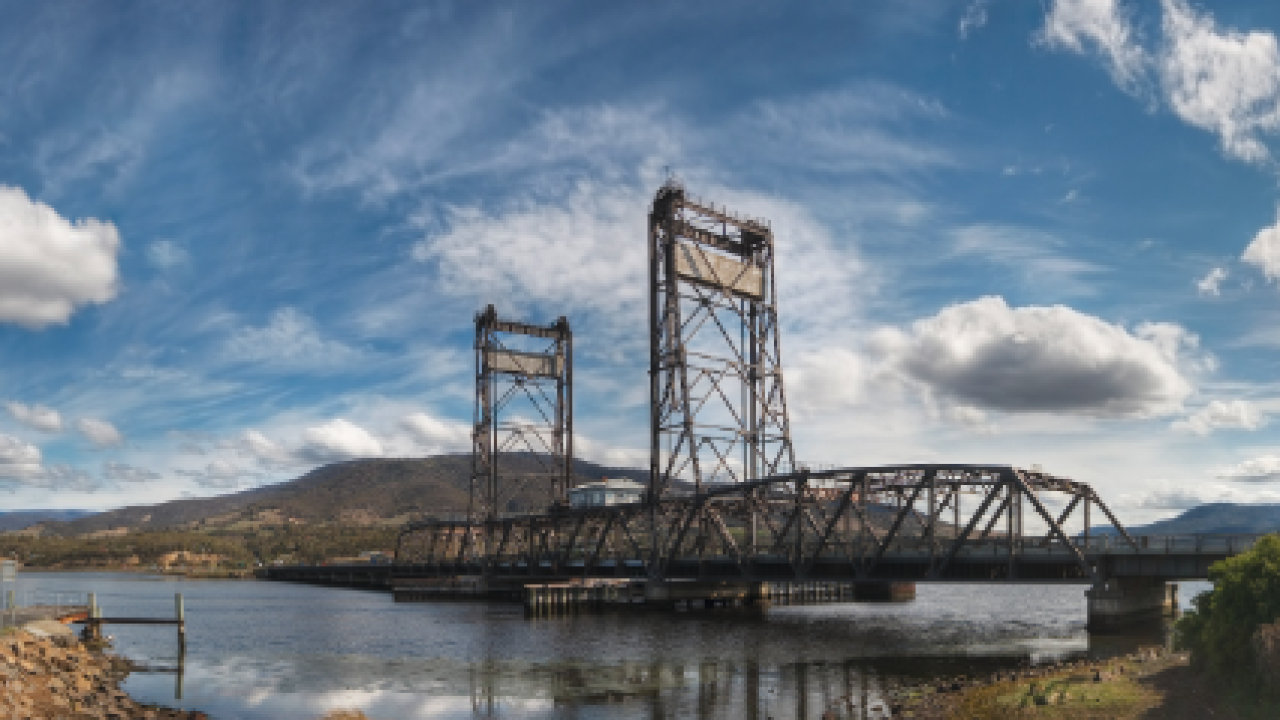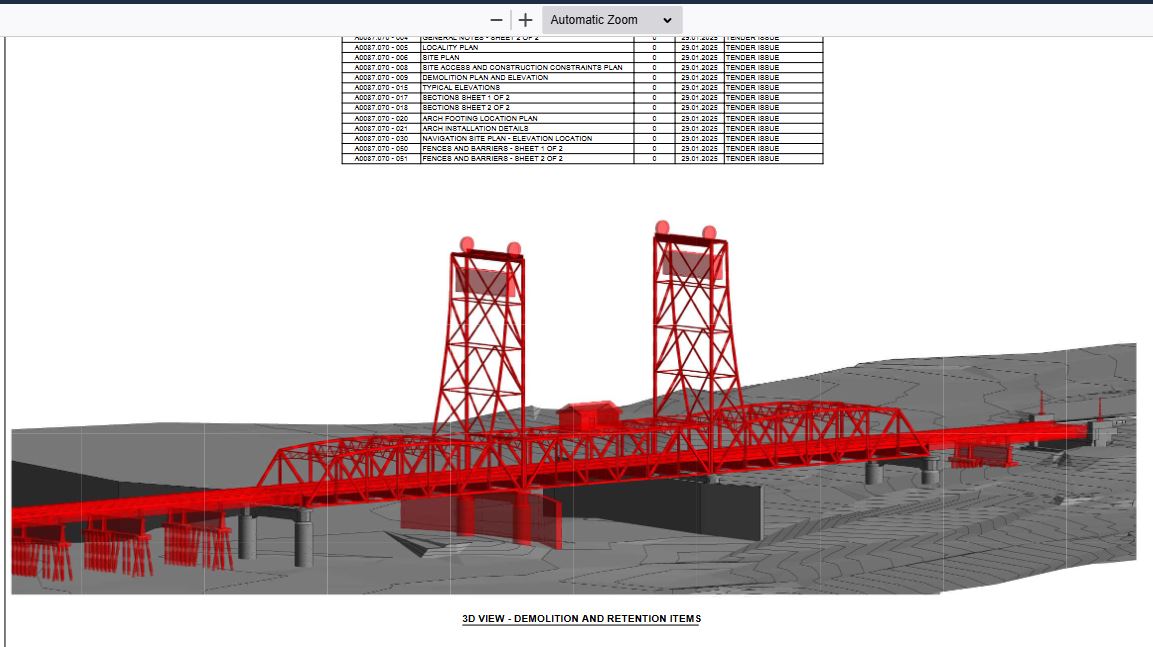Plans for old Bridgewater Bridge revealed

With construction of the new Bridgewater Bridge well advanced, the Gazette can exclusively reveal the Government's plans for the existing landmark Bridgewater Bridge.
Released this week, tender documents for the old bridge’s removal highlight sections that will be kept, either in the near vicinity at Bridgewater, or at the existing bridge site.
The iconic towers and 33-metre road section will be removed, both for safety reasons and to enable river traffic to resume.
However, the convict-era causeway will be retained.
$149,000 has also been set aside to turn the northern arch into public art.
DEMOLITION DUE FOR COMPLETION BY MID-SEPTEMBER 2026
The current steel-and-concrete bridge, completed in 1946 and already under regular and close engineering scrutiny “has now reached the end of its economic life,” says the detail of the tender documents.
With completion of the new bridge expected in mid-2025, the tender is dated April 1, 2025 with completion due by mid-September, 2026.
A 120-page section titled Old Bridgewater Bridge Demolition Specification RFT3849 adds: “salvage of nominated materials from the old bridge for later use by the (state government) as part of its heritage interpretation strategy, which includes utilisation of representative parts of the superstructure for interpretation.”
For the community, particularly those in Brighton, retaining bridge sections for their heritage value will preserve a valuable engineering record, but also meet an emotional need to see local retention of some aspect of the 80 year old construct.
Specifically, the demolition list includes:
The lift span, together with the control building, counterweights, ropes, sheaves, all other ancillary mechanical, electrical and control infrastructure
- Southern approach span and Southern flanking span
- Northern approach span and Northern flanking span
- Northern and southern towers and the Southern tower caisson (including timber fender)
- Southern approach span piles and Northern approach span pile
Road gantries and furniture, lighting, CCTV, signage and other ancillary items associated with the Old Bridgewater Bridge.
Those pieces identified for retention, in-place and undisturbed, include:
- The Causeway
- Existing northern tower caisson (including timber fender)
- Existing northern caisson and existing southern caisson
- 1893 Bridge caisson
- Abutments of the Old Bridgewater Bridge
- 1874 bridge abutment – South and 1893 bridge abutment – South
- 1874 bridge abutment – North and 1893 bridge abutment – North 1894 Bridgewater Bridge, an identified area of archaeological potential
- Bridgewater railway station and existing main line railway alignment
As far as the River Derwent is concerned, the tender documents note that where piers/piles/caissons are to be demolished, “they are to be removed to the existing bed level of the river.
“If this is not practicable without significant sediment disturbance causing environmental impacts then as close as practicable to the existing bed level of the river and in all circumstances no greater than 500mm from the existing bed level of the river.”

NORTHERN TOWER ARCH TO BE TURNED INTO $150K PUBLIC ART
The Gazette understands that the northern tower arch will be removed intact and retained on the foreshore at Bridgewater, but a final location is yet to be determined. Some material and specified significant joints and welds will be retained in the form of a public art piece.
That $149,000 project is currently advertised on the Arts Tasmania website.
This draws its salvage-retention cues from the Heritage Impact Statement, composed by the Purcell group in December 2021, which identified particular sections of the old bridge to be retained.
Those sections are bridge joints which demonstrate welding design and techniques designed to maximise strength in steel structures, and the Pratt stress beams, a pre-war technology which underpins the roadway surface.
A third element, the northern tower arch, is also identified, along with existing timber railway sleepers from the old bridge.
The tender documents also focus on a large number of safety considerations in the planning and methodology involved, the importance of reopening the navigation channel, access and use of the new bridge, and environmental considerations including disposal, recyclability and reusability of materials demolished.
A number of the companies and contractors involved in the construction of the new bridge, including McConnell Dowell, have expressed interest in the demolition tender; several already have on site at Bridgewater such machinery as large cranes.
Those likely to bid are being briefed in a MS Teams session for what’s called an industry pre-tender session on February 12 at 9.30am. Pre-registration is required.




Add new comment